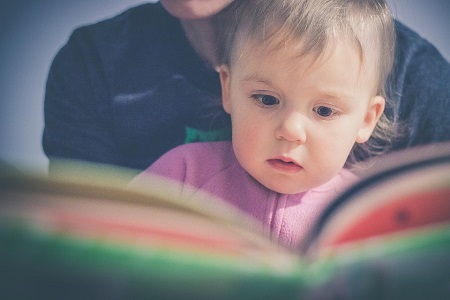Aspects Of Child Development Part 1
Child development is not a matter of a single topic, but progresses somewhat differently for different aspects of the individual. Here are descriptions of the development of a number of physical and mental characteristics.
development is not a matter of a single topic, but progresses somewhat differently for different aspects of the individual. Here are descriptions of the development of a number of physical and mental characteristics.
Emotional Development
Some people who were raised to not show emotions are left without the emotional vocabulary that is needed in turn to raise their children with a developed sense of emotions. Without an emotional vocabulary taught to them, these kids are left unsure of what they are feeling, unable to express themselves. When someone is not able to express their emotions, due to limited emotional vocabulary, or fear of being ostracized by their peers, they struggle in many areas of their lives, such as: school; friendships; family life; and intimate relationships in adulthood.
Physical Growth
Physical growth in stature and weight occurs over the 15–20 years following birth, as the individual changes from the average weight of 3.5 kg and length of 50 cm at full term birth to full adult size. As stature and weight increase, the individual's proportions also change, from the relatively large head and small torso and limbs of the neonate, to the adult's relatively small head and long torso and limbs. The child’s pattern of growth is in a head-to-toe direction, or cephalocaudal, and in an inward to outward pattern (center of the body to the peripheral) called proximodistal.
Motor
Abilities for physical movement change through childhood from the largely reflexive (unlearned, involuntary) movement patterns of the young infant to the highly skilled voluntary movements characteristic of later childhood and adolescence.
Individual Differences
Typical individual differences in motor ability are common and depend in part on the child's weight and build. However, after the infant period, typical individual differences are strongly affected by opportunities to practice, observe, and be instructed on specific movements. Atypical motor development such as persistent primitive reflexes beyond 4–6 months or delayed walking may be an indication of developmental delays or conditions such as autism, cerebral palsy, or down syndrome. Lower motor coordination results in difficulties with speed accuracy and trade-off in complex tasks.
Children With Disabilities
Children with Down syndrome or Developmental coordination disorder are late to reach major motor skills milestones. A few examples of these milestones are sucking, grasping, rolling, sitting up and walking, talking. Children with Down syndrome sometimes have heart problems, frequent ear infections, hypotonia, or undeveloped muscle mass. This syndrome is caused by atypical chromosomal development. Along with Down syndrome, children can also be diagnosed with a learning disability. Learning Disabilities include disabilities in any of the areas related to language, reading, and mathematics. Basic reading skills is the most common learning disability in children, which, like other disabilities, focuses on the difference between a child’s academic achievement and his or her apparent capacity to learn.
Population Differences
 Regardless of the culture a baby is born into, they are born with a few core domains of knowledge. These principals allow him or her to make sense of their environment and learn upon previous experience by using motor skills such as grasping or crawling. There are some population differences in motor development, with girls showing some advantages in small muscle usage, including articulation of sounds with lips and tongue. Ethnic differences in reflex movements of newborn infants have been reported, suggesting that some biological factor is at work. Cultural differences may encourage learning of motor skills like using the left hand only for sanitary purposes and the right hand for all other uses, producing a population difference. Cultural factors are also seen at work in practiced voluntary movements such as the use of the foot to dribble a soccer ball or the hand to dribble a basketball.
Regardless of the culture a baby is born into, they are born with a few core domains of knowledge. These principals allow him or her to make sense of their environment and learn upon previous experience by using motor skills such as grasping or crawling. There are some population differences in motor development, with girls showing some advantages in small muscle usage, including articulation of sounds with lips and tongue. Ethnic differences in reflex movements of newborn infants have been reported, suggesting that some biological factor is at work. Cultural differences may encourage learning of motor skills like using the left hand only for sanitary purposes and the right hand for all other uses, producing a population difference. Cultural factors are also seen at work in practiced voluntary movements such as the use of the foot to dribble a soccer ball or the hand to dribble a basketball.
Cognitive/Intellectual
Cognitive development is primarily concerned with ways in which young children acquire, develop, and use internal mental capabilities such as problem solving, memory, and language.
The capacity to learn, remember, and symbolise information, and to solve problems, exists at a simple level in young infants, who can perform cognitive tasks such as discriminating animate and inanimate beings or recognizing small numbers of objects. During childhood, learning and information-processing increase in speed, memory becomes increasingly longer, and symbol use and the capacity for abstraction develop, until a near-adult level is reached by adolescence.
Mechanisms
Cognitive development has genetic and other biological mechanisms, as is seen in the many genetic causes of intellectual disability. Environmental factors including food and nutrition, responsiveness of parents, daily experiences, physical activity and love can influence early brain development of children. Individual Differences
Individual Differences
There are typical individual differences in the ages at which specific cognitive abilities are achieved, but schooling for children in industrialized countries is based on the assumption that these differences are not large. Atypical delays in cognitive development are problematic for children in cultures that demand advanced cognitive skills for work and for independent living.
Population Differences
There are few population differences in cognitive development. Boys and girls show some differences in their skills and preferences, but there is a great deal of overlap between the groups. Differences in cognitive achievement of different ethnic groups appears to result from cultural or other environmental factors.
Source: Aspects Of Child Development
